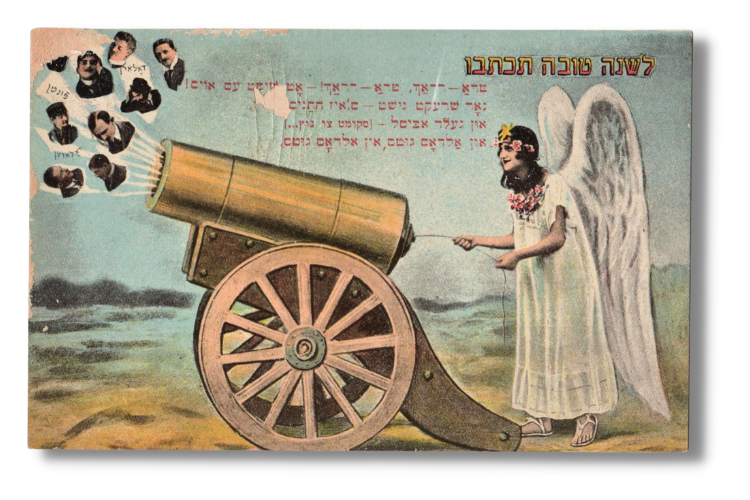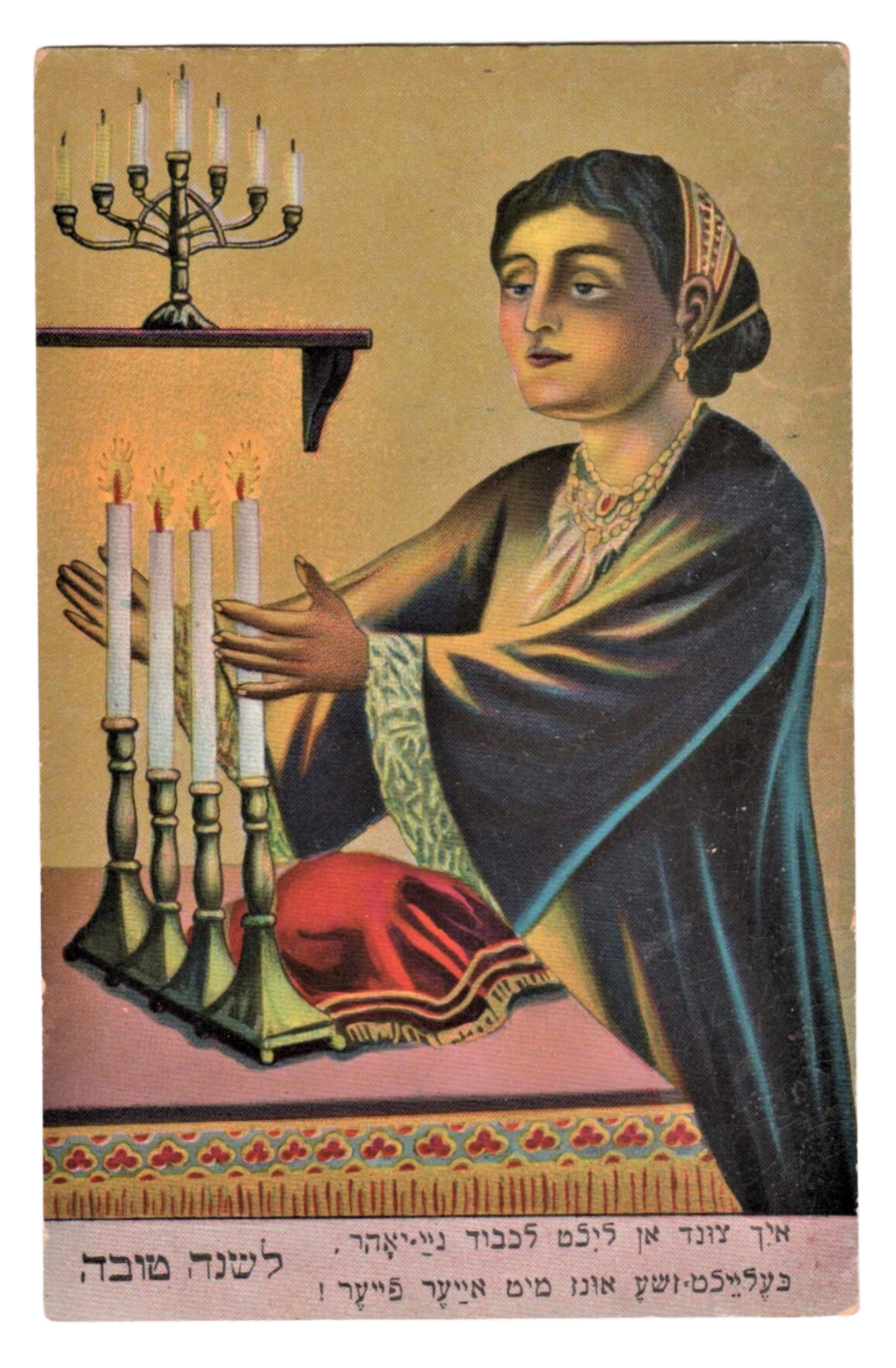
Vintage Eye Candy for the New Year
Looking back to my childhood in the late 1940s to the early 1950s, it seems as if Jewish holidays had as much to do with symbolic preparations outside the synagogue as with the actual religious services inside—helping to clean the house before Passover, rolling out the dough for the kreplach, or watching the men build the sukkah in the concrete yard behind the shul.
For my mother, Rosh Hashanah meant having the foresight to order engraved New Year cards well before the actual holiday. During the weeks preceding the holiday, our usually formal living room would change and become cheerfully cluttered with cards from family and friends. In a variety of sizes and colors, the cards would be stuck horizontally on the slats in the window blinds, propped up in front of the mahogany breakfront, and wedged in the small glass panes of the French doors that opened onto the hallway.
Far from an attempt to assimilate into America by mailing our version of Christmas cards, as I suspected during my cynical college years, the tradition of sending out greetings at the start of the Jewish month of Elul probably began in the 16th century. The use of commercially printed cards dates to the late 19th century, when they began to reflect the status and changing conditions of Jews in different countries.
Below is a selection from my personal collection of 200 cards. Coming mainly from Eastern Europe, England, the United States and Israel, they illustrate how Jews used to live.
L’shana tova tikatev ve-tehatem. May you be inscribed and sealed for a good year.





All images are copyrighted by Karen R. Davis. Images of Our Past: Vintage Jewish New Year Cards by Karen R. Davis available soon at NanasReserve.etsy.com.



